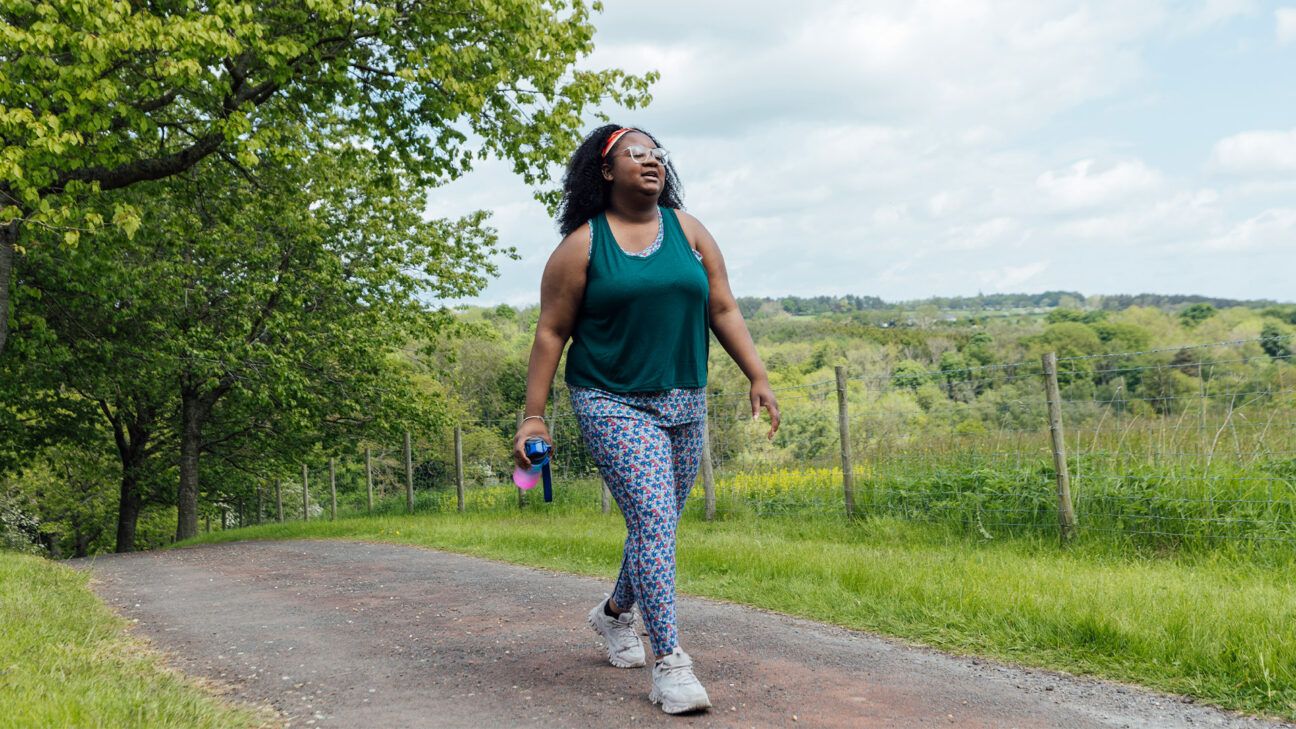
- The 6-6-6 walking trend may help you lose weight and get fit.
- This low impact workout involves 60 minutes of walking, either at 6 a.m. or 6 p.m.
- Experts say walking, in general, is good for your physical and mental health.
- To get started with a walking program, it’s best to start slowly and build up.
If you liked the 12-3-30 treadmill challenge and the 90-30-50 diet, then you might also want to try the 6-6-6 walking trend.
Experts, like Dr. Milica McDowell, a Certified Exercise Physiologist and Vice President of Operations at Gait Happens, say walking is the most effective form of preventive physical activity you can do.
“Walking more than 3,500 steps per day has been repeatedly shown to help reduce cardiovascular and all-cause death risks. It’s low cost and assessable to most,” she said, adding that it’s an “amazing” way to take control of your health.
But, what is the 6-6-6 walking workout and what benefits can it especially provide?
What the 6-6-6 walking workout involves
Mike Julom, an ACE-certified personal trainer, CrossFit athlete, and founder of ThisIsWhyImFit, explained that the 6-6-6 walking workout involves walking for 60 minutes, either at 6 a.m. or 6 p.m. It additionally includes a 6-minute warm-up at a slow place to help you ease into walking and a 6-minute cool-down to aid in recovery.
“The bulk of the exercise is at a faster, brisk pace to raise the heart rate and challenge the cardio system,” noted Julom. “It’s designed to be short and simple, especially for people who want to fit exercise into a busy day.”
According to McDowell, this makes the 6-6-6 program a way to get more than the 150 minutes of exercise per week recommended by both the American College of Sports Medicine and the U.S. Centers for Disease Control and Prevention.
“By doing it early (6 a.m.) or late (6 p.m.), it helps walkers find the time to squeeze the walk in before their day or schedule gets crazy,” she said.
How the 6-6-6 walking workout can benefit your health
As McDowell noted, walking in general, whether it follows the 6-6-6 format or not, is a great form of exercise.
“If you walk in Zone 2 of your heart rate range, you can reap numerous health benefits,” said McDowell. “Zone 2 is about 50% of HR Max for most people (estimate HR max by taking 220-(your age)).”
Per McDowell, walking in this zone helps you burn more fat for fuel, which can aid in weight loss.
Also, because walking has less impact on joints and tissues than running or sports like pickleball, McDowell said it can be safe for many people to try.
Julom agreed, saying that walking is great exercise, especially for older adults or those with joint pain or limited mobility.
He further noted that regular walking has been shown to reduce mental health conditions such as anxiety and depression.
Additionally, according to Julom, it may improve gut and bone health and reduce people’s risks for cardiovascular disease and death.
The American Heart Association (AHA) adds that walking 150 minutes per week can provide such benefits as:
- Better sleep
- Improved cognition
- Reduced risk for heart disease, stroke, diabetes, and certain cancers
- Lowered blood pressure, blood sugar, cholesterol
- Increased energy and stamina
- Reduced risk for depression
- Better memory
- Lowered risk of dementia
- Stronger bones
- Less weight gain
How to get started with a new walking workout
To get started with a walking program, the American Heart Association (AHA) suggests choosing comfortable clothing and shoes with good support. Those designed for walking or running work best but aren’t mandatory.
They additionally advise leaving about a half-inch of space between your longest toe and the end of your shoe and avoiding cotton socks to prevent blisters.
They further suggest starting slow and building up rather than attempting to do the full distance on your first day. Even as little as 10-15 minutes is enough in the beginning.
When you’re walking, the AHA says you should walk naturally and walk at a pace where you can breathe comfortably. After you warm up, you can try walking at a faster rate. You can also try alternating between faster and slower intervals, gradually increasing the amount of time spent walking faster. Walking uphill can help you build muscle and burn more calories.
Additionally, the AHA states that stretching should be done at the end of your workout since your body will be fully warmed up at this point.
Finally, they advise tracking your progress and squeezing walking into your schedule wherever you can, even if that means taking multiple short walks each day.
For many, the 6-6-6 workout’s requirement to walk either in the morning or evening could help them achieve this goal.
Takeaway
The 6-6-6 walking workout trend advises people to walk for 60 minutes a day, either at 6 a.m. or 6 p.m., with a 6-minute warm-up and 6-minute cool-down.
The benefits of walking are numerous, including reduced risk for chronic diseases like diabetes and cardiovascular disease.
To get started with a walking program, wear comfortable clothing and supportive shoes, begin slowly, and make sure you warm up before stretching.

